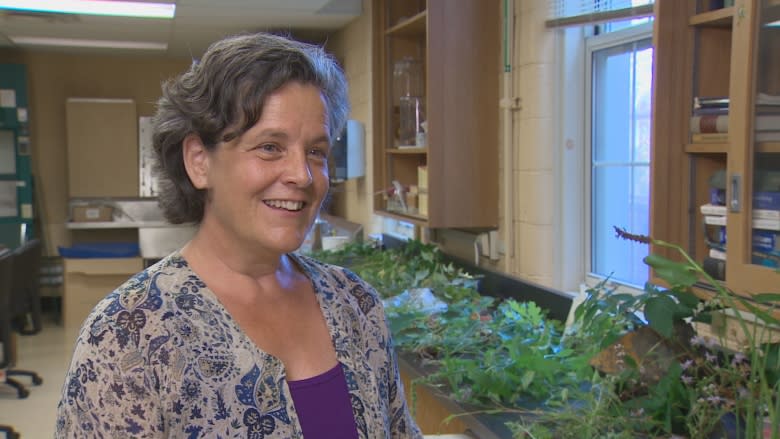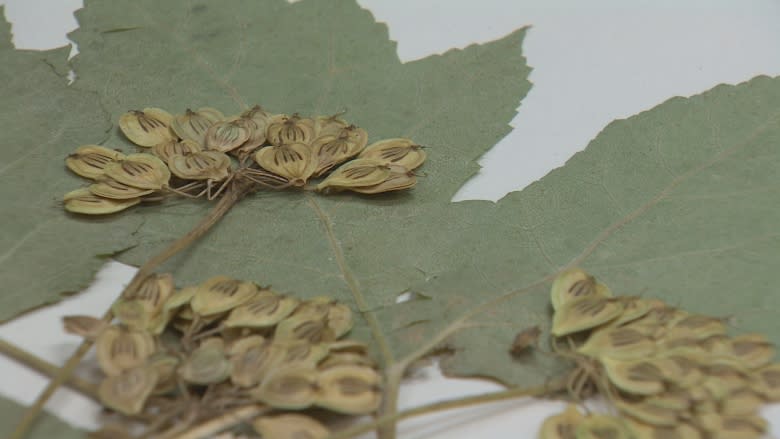UNB herbarium plants its collection into online database to aid research
The province's largest collection of vascular plants is moving to the World Wide Web.
Robyn Shortt of the Connell Memorial Herbarium said 58,000 specimens are being entered into a digital database to aid scientific research.
The database will aim to help not only botanists, but any citizen who comes across an unfamiliar plant, she said.
"If they have a plant in their backyard, or are doing a fish survey and wanted to know the habitat around it, and found a plant they couldn't identify, they can come in and compare," she said.
Oldest institutional collection
Established in 1838, the Connell Memorial Herbarium is the oldest institutional collection still running in the country.
The second largest collection in Atlantic Canada, it now houses over 64,000 specimens. It even has an algae collection of more than 27,000 specimens and a small mycological (fungi) collection.
Over the last few years, Shortt said a team of volunteers at the University of New Brunswick's "plant library" worked to get as many of the specimens' data online with high-resolution scans of the herbarium's collection.
The project was funded by the New Brunswick Wildlife Trust Fund and the university's biology department, and proceeds from the sale of the "Flora of New Brunswick," a manual on identifying plants in the province.
Conservation biologist Allison Patrick said having the herbarium so close is great for her work with the Nature Conservancy of Canada in Fredericton.
She said the conservancy recently found a rare plant, a "little curly grass fern," in an area near Chance Harbour, about 25 kilometres northeast of Grand Bay-Westfield.
The plant is now one of the newest additions to the herbarium's collection.
"Often we find plants that we're not familiar with and then we can come here and meet with experts and see plant samples and kind of solve the mystery," she said.
Plant puzzles
Shortt said the herbarium's collection includes plants from the early to mid-1800s until now. Many of the older specimens were collected by some of the first botanists in New Brunswick, she said.
"It's really neat to look at their handwriting and trying to decipher the locations," she said. "What might be called one thing in northern N.B. is called something else in southern N.B.,
"So you end up doing these puzzles and trying to figure out what the plants are and how the names have changed over time and over geography."





